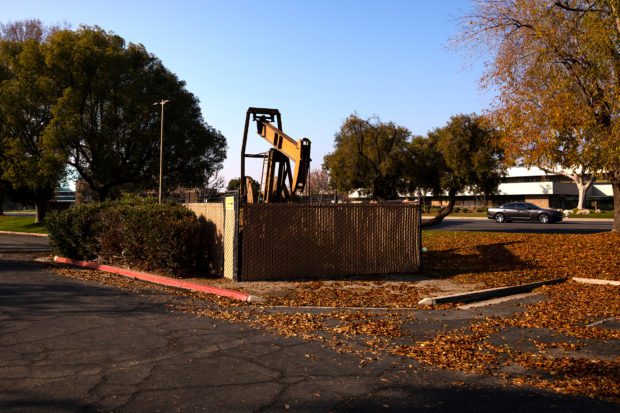
On Oct. 21, Governor Gavin Newsom traveled to Wilmington, Calif., to make a surprising announcement. Surrounded by doctors, environmental justice leaders and California legislators who have championed stronger policies to regulate the oil industry, Newsom recognized that “reliance on fossil fuels has resulted in more kids getting asthma, more children born with birth defects and more communities exposed to toxic, dangerous chemicals.
“California is taking a significant step to protect the more than two million residents who live within a half mile of oil drilling sites, many in low-income and communities of color.”
To achieve this goal, the state is proposing a new regulation that would prohibit new wells and facilities within 3,200 feet of homes, schools, hospitals, nursing homes and other sensitive locations. It would also require pollution controls for existing wells and facilities within the same 3,200-foot setback area.
The state announcement came after a public health expert panel completed a report that concluded that when oil and gas developments are within 3,200 feet, there is a strong connection to higher rates of adverse birth outcomes, respiratory diseases such as asthma and heart disease, among other health impacts.
This announcement was received with optimism by environmental justice advocates that for years have been fighting neighborhood oil drilling. We might not have doctorates or scientific degrees from prestigious universities, but we knew all along that there is no safe distance for oil and gas drilling near our homes and schools.
The smell of rotten eggs, the shaking of the walls from the vibrations of oil rigs and the grab samples that we took, which indicated levels of the carcinogens benzyne and formaldehyde emitted by the wells and storage tanks, have given us enough evidence that the health and well-being of residents of fenceline communities, most of them Black and Latino, were being sacrificed to protect oil companies’ profits.
The proposed rule announced by Governor Newsom is a critical first step in the right direction, but there is a lot of work left for advocates and residents to make sure that the state entity that regulates oil and gas, the California Geologic Energy Management Division (CalGEM), adopts the 3,200-foot setback. There is an uphill battle ahead.
Since the proposed rule was announced, various oil and gas industry representatives have taken the stand to express their disagreement. Catherine Reheis-Boyd, president of the Western States Petroleum Association (WSPA), described the rule as an “activist assault on California’s way of life, the economy and people.”
The rebuttal to this argument is that two million Californians have been assaulted by the greediness of the oil and gas industry. It is time for the millions of Blacks and Latinos living in Arvin, Lamont, Wasco, Lost Hills, Wilmington and many other fenceline communities to change their way of life for one that does not include a horrendous oil rig in their backyard.
The WSPA’s opposition to a setback is not new. They mobilized unions and other allies against bills that were introduced in 2020 (AB 345) and in 2021 (SB 467) that tried to establish a 2,500-foot setback between new oil and gas wells and sensitive receptors.
The WSPA has criticized the proposed rule arguing that it would lead to less reliable energy and higher prices in an industry that employs about 150,000 people. What the WSPA representatives are not saying is that California oil production has fallen nearly 60% from its peak in 1985, in part because the state’s deposits of heavy crude can’t compete in a world that prefers cheaper natural gas.
About 35,000 wells have been idled for more than a decade. All this decline has happened before any changes in regulations, and the job losses began a long time ago.
December will be a critical month for the proposed rule and for the lives of the 2 million fenceline Californians who really want to see a change in their way of life.
CalGEM is receiving public comments on the proposed rule until Dec. 21. All progressive Californians—those who care about the environment, who are concerned with climate change and who support the environmental justice movement—are encouraged to make your voice count. Support the health of residents who live in neighborhoods where drilling is happening.
Demand the following: 1) a 3,200-foot setback, 2) ban all new permits within the setback until the final rule is in effect and 3) apply the setback not only to new but also to existing wells. Submit your comments at actionnetwork.org/letters/no-drilling.
*****
